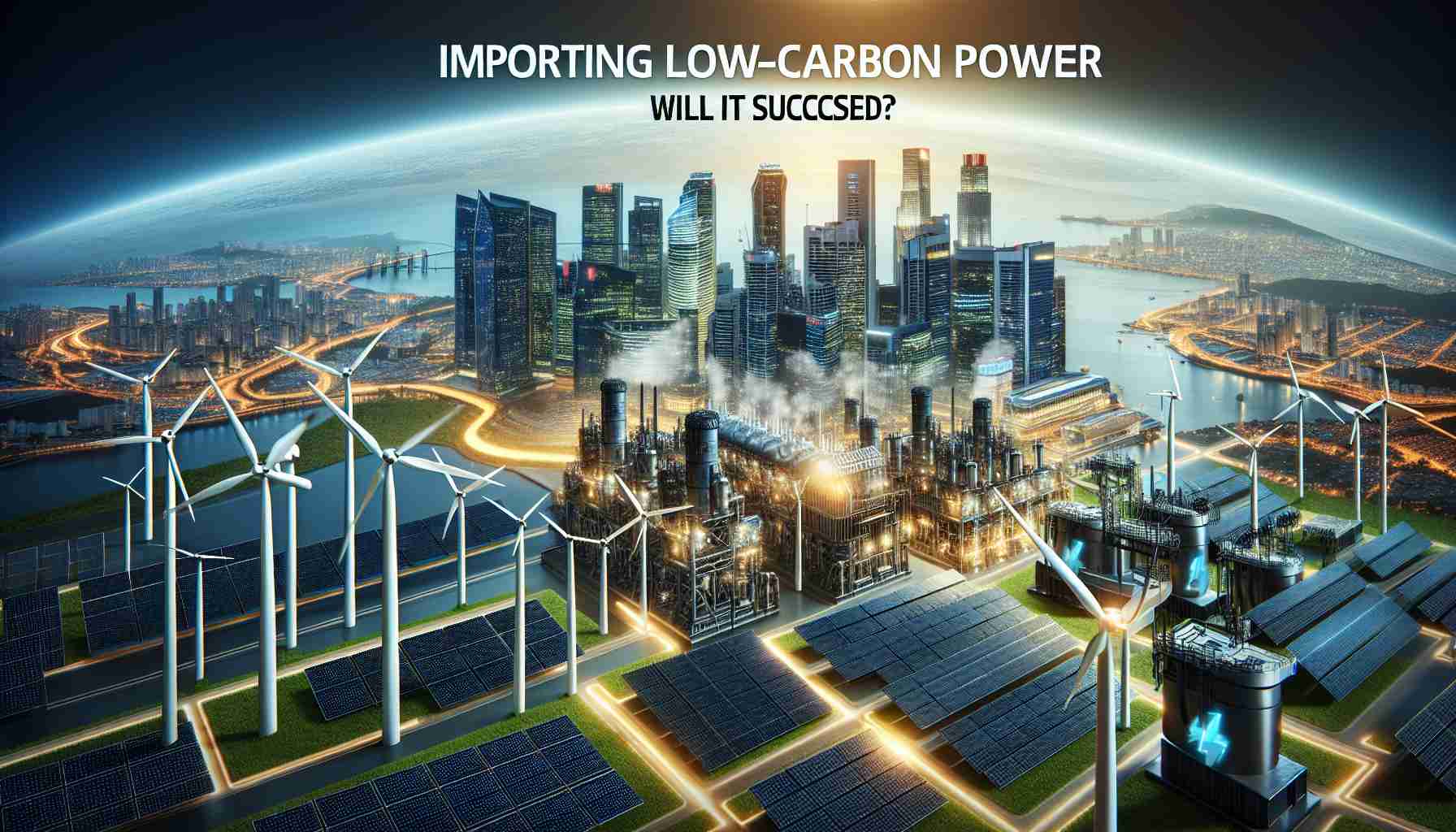
Singapore is taking a significant step forward in its renewable energy journey by initiating the import of low-carbon electricity from Malaysia. This development is crucial for the city-state, which faces challenges due to its limited natural resources. The ambitious energy strategy aims to boost the transition to greener alternatives, although concerns remain regarding regional cooperation and fair cost-sharing.
As a densely populated urban area, Singapore has been actively seeking ways to bolster its energy sustainability. Officials have indicated that an increase in imported low-carbon electricity will play a vital role in the nation’s goal of achieving a decarbonized power sector. The Energy Market Authority has outlined plans to secure approximately 6 gigawatts of low-carbon electricity by 2035, which is projected to satisfy about one-third of Singapore’s energy demand.
In the initial stages of this initiative, Sembcorp Power successfully commenced the import of 50 megawatts of renewable energy from Tenaga Nasional Berhad, Malaysia’s national power company. This electricity is sustainably sourced from Malaysia’s grid, leveraging existing solar and hydropower infrastructures as well as other approved renewable sources.
Furthermore, discussions between the two nations are in progress to elevate the electricity import capacity to 300 megawatts, signaling a strong commitment to advancing the region’s renewable energy landscape. However, experts caution that without strengthened regional collaboration, this vital transition could face significant obstacles.
Singapore’s Renewable Energy Revolution: Low-Carbon Electricity Imports from Malaysia
Introduction to Singapore’s Renewable Energy Strategy
Singapore is making remarkable strides in its quest for sustainable energy solutions by initiating the import of low-carbon electricity from Malaysia. This development is pivotal, considering the nation’s limited natural resources and its ambitious goal to transition towards greener energy alternatives. The strategic energy plan is designed to strengthen Singapore’s energy sustainability and carbon reduction efforts, as the country aims for a decarbonized power sector by 2050.
Key Features of the Low-Carbon Electricity Initiative
The Energy Market Authority of Singapore has set an ambitious target to secure around 6 gigawatts of low-carbon electricity by 2035, which is anticipated to fulfill approximately one-third of the nation’s energy demand. This commitment is not only a step towards meeting Singapore’s energy needs but also a shift towards mitigating climate change impacts.
In the initial phase, Sembcorp Power has successfully imported 50 megawatts of renewable energy from Tenaga Nasional Berhad, the national power company of Malaysia. This energy is sustainably harnessed from a mix of sources, including solar and hydropower, effectively utilizing Malaysia’s existing renewable infrastructure. As plans progress, discussions are underway to scale up this capacity to 300 megawatts, showcasing a strong collaborative spirit between the two countries.
Pros and Cons of Singapore’s Electricity Import Plan
Pros:
– Increased Energy Security: The import of low-carbon electricity enhances Singapore’s energy resilience, reducing reliance on fossil fuels.
– Sustainable Development: By sourcing clean energy, Singapore moves closer to its climate goals and demonstrates leadership in sustainable practices.
– Regional Collaboration: This initiative fosters stronger cross-border relationships and regional cooperation in energy sustainability.
Cons:
– Cost Implications: Concerns about fair cost-sharing and pricing structures may complicate negotiations and implementation.
– Dependence on External Sources: Reliance on Malaysia for electricity may pose risks if there are disruptions in supply due to geopolitical tensions or infrastructure issues.
Insights and Innovations in Renewable Energy Cooperation
The collaboration between Singapore and Malaysia exemplifies a growing trend in ASEAN where nations are increasingly turning towards regional partnerships to address energy challenges. This model could pave the way for future energy agreements across Southeast Asia, unlocking new opportunities for clean energy innovations, technology sharing, and joint sustainability efforts.
One innovation within this framework is the potential use of smart grid technologies that facilitate the efficient transmission and distribution of imported renewable energy. These technologies not only improve stability and efficiency but also support real-time monitoring and management of energy resources.
Sustainability and Market Predictions
As global attention turns to sustainability, Singapore’s strategic move reflects wider trends in energy markets worldwide, focusing on low-carbon alternatives and renewable sources. Experts predict that by 2030, countries heavily investing in renewable energy imports will enhance their energy portfolios while contributing to global decarbonization efforts.
Furthermore, as nations collectively tackle climate change, Singapore’s proactive approach may influence other urban centers with similar resource constraints to explore innovative solutions for sustainable energy.
Conclusion: The Path Ahead for Singapore’s Energy Ambitions
Singapore’s initiative to import low-carbon electricity from Malaysia marks a significant milestone in its aspirational energy journey. While there are challenges ahead regarding regional cooperation and cost-sharing, the collaborative efforts between national companies showcase a commitment toward a sustainable future. Singapore’s actions could serve as a model for other countries as they embark on their paths toward renewable energy transition.
For more information on Singapore’s renewable energy endeavors, visit the Energy Market Authority.



